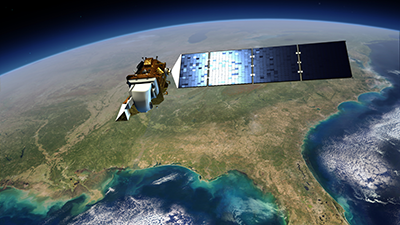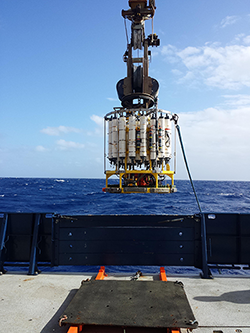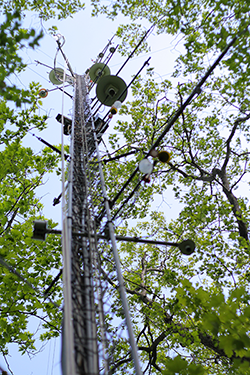Sustained observations provide the foundation for understanding Earth’s carbon budget on timescales ranging from seasonal to several decades. To track variations in carbon stocks in the atmosphere, ocean, and terrestrial biosphere—as well as fluxes between these reservoirs—data records must be of sufficient quality, density, and duration. Such data are needed to verify emissions inventories and carbon storage estimates.
One group, the U.S. Carbon Cycle Science Program (CCSP), has already coordinated sustained observations among various government agencies to a significant degree. In April 2016, the Carbon Cycle Interagency Working Group, via the CCSP, sponsored a workshop hosted by the National Oceanic and Atmospheric Administration’s (NOAA) Earth System Research Laboratory. Sixty-one participants attended the workshop, including university, government, and private sector researchers and agency program managers.
Over the past 2 decades, U.S. science agencies have sponsored a vigorous program of carbon research.
Participants explored targeted efforts to address gaps and enhance links among agencies, with consideration of the U.S. role in an international carbon observing system. Presentations highlighted important discoveries from long-term data records. Attendees discussed challenges to sustained data collection, such as the difficulties of securing funding for time series measurements and implementing new technologies to improve capability. One presentation described efforts by the U.S. Group on Earth Observations to coordinate Earth observations and engage with stakeholders.
The workshop identified research areas that are ripe for translation to decision support services. Over the past 2 decades, U.S. science agencies have sponsored a vigorous program of carbon research, resulting in a wide variety of data products and data synthesis techniques with potential to inform stakeholders and carbon management efforts.

For example, the U.S. Environmental Protection Agency produces an annual U.S. Greenhouse Gas Inventory to meet U.S. commitments under the United Nations Framework Convention on Climate Change. Likewise, data assimilation and integration efforts such as NOAA’s CarbonTracker, NASA’s Carbon Monitoring System, and the Global Carbon Project enable ongoing evaluation of inventories and process models. In addition to identifying these endeavors, participants discussed opportunities to expand and coordinate programs that support critical long-term observations from observatories on the ground and aboard aircraft and satellites.

Although much work is still needed to develop long-term monitoring networks, recent investments in technology have already enabled the deployment of autonomous sensor networks and satellite measurement systems with unprecedented capability.
Two sensor networks funded by the National Science Foundation, the Ocean Observatories Initiative and the National Ecological Observatory Network, currently provide or will soon provide infrastructure to leverage new technologies and generate rich data sets to advance carbon cycle science. These platforms, along with vessels of opportunity such as oceangoing ships, commercial aircraft, and profiling floats, can be further equipped with chemical sensors.

For remote sensing, NASA’s Orbiting Carbon Observatory-2 (OCO-2) is the first U.S. satellite mission designed to measure air column carbon dioxide. Workshop participants noted that the further expansion of a successful space-based carbon monitoring program will require rigorous algorithms and “ground truth” verification. Presentations highlighted the value of model-informed observing system design and described recent examples.
Workshop participants also considered other topics at the intersection of research and decision support services, including understanding ecological and oceanic carbon storage impacts of ocean acidification, monitoring of biomass stocks with emphasis on vulnerable carbon reservoirs, rapid detection of leaks from oil and gas facilities, and quantification of urban emissions to inform local-scale mitigation efforts.
Workshop organizers will continue to engage with the carbon cycle community to produce a scientific strategy document for sustained carbon cycle observations. This effort will augment the 2011 U.S. Carbon Cycle Science Plan and inform the Second State of the Carbon Cycle Report.
—Arlyn Andrews (email: [email protected]), Earth System Research Laboratory, National Oceanic and Atmospheric Administration, Boulder, Colo.
Citation:
Andrews, A. (2017), Strengthening the observational basis for carbon science, policy, Eos, 98, https://doi.org/10.1029/2017EO080609. Published on 12 September 2017.
Text not subject to copyright.
Except where otherwise noted, images are subject to copyright. Any reuse without express permission from the copyright owner is prohibited.

